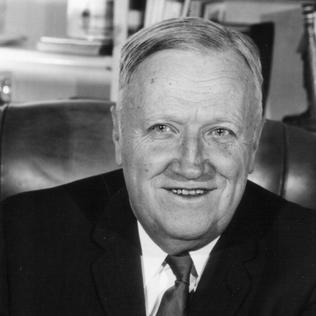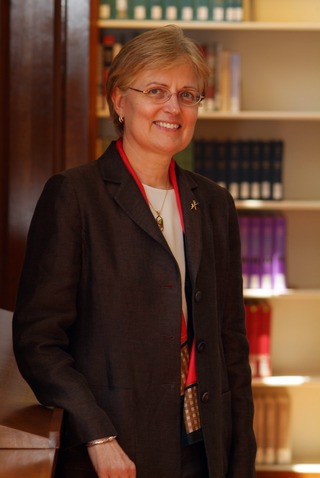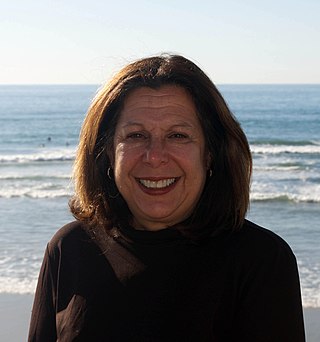Related Research Articles

The American Association for the Advancement of Science (AAAS) is an American international non-profit organization with the stated goals of promoting cooperation among scientists, defending scientific freedom, encouraging scientific responsibility, and supporting scientific education and science outreach for the betterment of all humanity. AAAS was the first permanent organization to promote science and engineering nationally and to represent the interests of American researchers from across all scientific fields. It is the world's largest general scientific society, with over 120,000 members, and is the publisher of the well-known scientific journal Science.

Eleanor Margaret Burbidge, FRS (née Peachey; 12 August 1919 – 5 April 2020) was a British-American observational astronomer and astrophysicist. In the 1950s, she was one of the founders of stellar nucleosynthesis and was first author of the influential B2FH paper. During the 1960s and 1970s she worked on galaxy rotation curves and quasars, discovering the most distant astronomical object then known. In the 1980s and 1990s she helped develop and utilise the Faint Object Spectrograph on the Hubble Space Telescope. Burbidge was also well known for her work opposing discrimination against women in astronomy.

David Jonathan Gross is an American theoretical physicist and string theorist. Along with Frank Wilczek and David Politzer, he was awarded the 2004 Nobel Prize in Physics for their discovery of asymptotic freedom. Gross is the Chancellor's Chair Professor of Theoretical Physics at the Kavli Institute for Theoretical Physics (KITP) of the University of California, Santa Barbara (UCSB), and was formerly the KITP director and holder of their Frederick W. Gluck Chair in Theoretical Physics. He is also a faculty member in the UCSB Physics Department and is currently affiliated with the Institute for Quantum Studies at Chapman University in California. He is a foreign member of the Chinese Academy of Sciences.

Frank Harold Spedding was a Canadian American chemist. He was a renowned expert on rare earth elements, and on extraction of metals from minerals. The uranium extraction process helped make it possible for the Manhattan Project to build the first atomic bombs.
Ames National Laboratory, formerly Ames Laboratory, is a United States Department of Energy national laboratory located in Ames, Iowa, and affiliated with Iowa State University. It is a top-level national laboratory for research on national security, energy, and the environment. The laboratory conducts research into areas of national concern, including the synthesis and study of new materials, energy resources, high-speed computer design, and environmental cleanup and restoration. It is located on the campus of Iowa State University.

Dan Shechtman is the Philip Tobias Professor of Materials Science at the Technion – Israel Institute of Technology, an Associate of the US Department of Energy's Ames National Laboratory, and Professor of Materials Science at Iowa State University. On April 8, 1982, while on sabbatical at the U.S. National Bureau of Standards in Washington, D.C., Shechtman discovered the icosahedral phase, which opened the new field of quasiperiodic crystals.
John Dudley Corbett was an American chemist who specialized in inorganic solid-state chemistry. At Iowa State and Ames Lab, Corbett lead a research group that focused on the synthesis and characterization of two broad classes of materials, notably Zintl phases and condensed transition metal halide clusters. Both classes of materials are important for their uses, for instance thermoelectrics, and for the theoretical advances they made possible by working to understand their complex bonding and electronic properties.
José Nelson Onuchic is a Brazilian and American physicist, the Harry C & Olga K Wiess Professor of Physics at Rice University. He does research in molecular biophysics, condensed matter chemistry, and genetic networks, and is known for the folding funnel hypothesis stating that the native state of a protein is a deep minimum of free energy for the protein's natural conditions among its possible configurations. He was the college master for Lovett College at Rice University from 2014 to 2019.
Robert Tycko is an American biophysicist whose research primarily involves solid state NMR, including the development of new methods and applications to various areas of physics, chemistry, and biology. He is a member of the Laboratory of Chemical Physics in the National Institute of Diabetes and Digestive and Kidney Diseases at the National Institutes of Health in Bethesda, Maryland, USA. He was formerly a member of the Physical Chemistry Research and Materials Chemistry Research departments of AT&T Bell Labs in Murray Hill, New Jersey. His work has contributed to our understanding of geometric phases in spectroscopy, physical properties of fullerenes, skyrmions in 2D electron systems, protein folding, and amyloid fibrils associated with Alzheimer’s disease and prions.

Elsa Reichmanis is an American chemist, who was the 2003 president of the American Chemical Society. She was elected a member of the National Academy of Engineering in 1995 for the discovery, development, and engineering leadership of new families of lithographic materials and processes that enable VLSI manufacturing. She was also inducted into the National Academy of Inventors in 2020. She is currently the Anderson Endowed Chair in Chemical and Biomolecular Engineering at Lehigh University. She previously served on the faculty at The Georgia Institute of Technology. Reichmanis is noted for her research into microlithography, and is credited for contributing to the "development of a fundamental molecular level understanding of how chemical structure affects materials function leading to new families of lithographic materials and processes that may enable advanced VLSI manufacturing".

Don W. Cleveland is an American cancer biologist and neurobiologist.

Vicki H. Grassian is a distinguished professor in the department of chemistry and biochemistry at the University of California, San Diego. She also holds the distinguished chair in physical chemistry.
Peter J. Nordlander is a Swedish physicist.

Patricia Ann Thiel was an American chemist and materials scientist who served as a distinguished professor of chemistry at Iowa State University. She was known for her research on atomic-scale structures and processes on solid surfaces.

Athena Safa Sefat, born 1977 in Iran is a Canadian/American physicist, with research focus on quantum materials and correlated phenomena. She was a senior scientist at Oak Ridge National Laboratory and led the DOE Basic Energy Science on "Probing Competing Chemical, Electronic, and Spin Correlations for Quantum Materials Functionality". She is currently a Program Manager at U.S. Department of Energy (DOE), Office of Science, Basic Energy Sciences, with Division of Materials Sciences and Engineering.
Beate Schmittmann is a German-American condensed matter physicist and academic administrator who is dean of the College of Liberal Arts and Sciences at Iowa State University. Her research includes work on driven diffusive systems, biomolecular transport, and epidemiology.

Zuzanna Stefania Siwy is a Polish–American chemist at the University of California, Irvine. Her research considers synthetic nanopores and their application in ionic devices. She is a Fellow of the American Physical Society, American Association for the Advancement of Science and Foundation for Polish Science.
Jennifer L. Ross is an American physicist who is Professor and Chair of the Department of Physics at Syracuse University. Her research considers active biological condensed matter physics. She was elected fellow of the American Physical Society in 2018 and American Association for the Advancement of Science in 2022.
Eileen Dolores Friel is an American astronomer specializing in the metallicity of star clusters. She is a former director of the Maria Mitchell Observatory and Lowell Observatory, and a professor emeritus of astronomy at Indiana University.
Cynthia Jeanne Jenks is an American physical chemist whose research has involved the surface properties of silver and of quasicrystals, observed through scanning tunneling microscopy and photoelectron spectroscopy. She is associate laboratory director for physical sciences at the Oak Ridge National Laboratory.
References
- 1 2 "Edward Yu". Iowa State University Department of Chemistry. Retrieved 6 August 2023.
- ↑ "Greetings" (PDF). Quanta. Iowa State University Department of Physics and Astronomy. Winter 2004–2005. Retrieved 6 August 2023.
- ↑ "Iowa State, Ames Lab researchers describe the pump that bacteria use to resist drugs". EurekAlert!. 23 February 2011. Retrieved 6 August 2023.
- ↑ "Iowa State, Ames Lab scientists describe protein pumps that allow bacteria to resist drugs". EurekAlert!. 20 April 2015. Retrieved 6 August 2023.
- ↑ "Yu, professor of chemistry and of physics and astronomy, named Corbett Professor in Chemistry". Iowa State University College of Liberals Arts and Sciences. 2 May 2014. Retrieved 6 August 2023.
- ↑ "New AAAS Fellows Recognized for Their Contributions to Advancing Science". American Association for the Advancement of Science. 24 November 2014. Retrieved 6 August 2023.
- ↑ "Yu named 2016 Fellow of the American Physical Society". Iowa State University College of Liberals Arts and Sciences. 2 November 2016. Retrieved 6 August 2023.
- ↑ "APS fellow archive". American Physical Society. Retrieved 6 August 2023.
- ↑ "Newsletter". Texas Section of the American Physical Society. September 2017. Retrieved 6 August 2023.